STORY HIGHLIGHTS
- The World Food Program has delivered at least 2,700 tons of rice to the country
- Roads blocked by endless debris are keeping it away from many in need
- Medicine is needed, but clean food a water are a priority
- Dead bodies are decaying in the sun but don't present a big health hazard
Cebu, Philippines (CNN) -- Tons of food from around the world have arrived in the Philippines, but the hundreds of thousands homeless and starving after Typhoon Haiyan decimated part of the country have yet to get a bite of it.
More than 2 million people need food aid, the Philippine government said. But endless landscapes of devastation were still blocking much of it from reaching the hungriest victims Wednesday.
The World Food Program has delivered at least 2,700 tons of rice to the country, but the logistical nightmare of traveling to the many islands ripped to pieces by one of the strongest storms in recorded history has it arriving in drips and drabs.
Clearing roads and runways has taken a long time, UNICEF spokesman Christopher De Bono said.
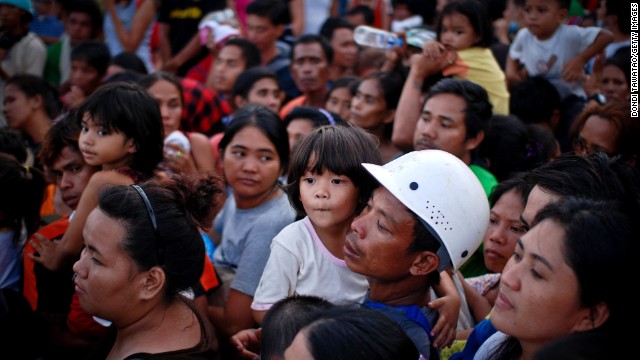
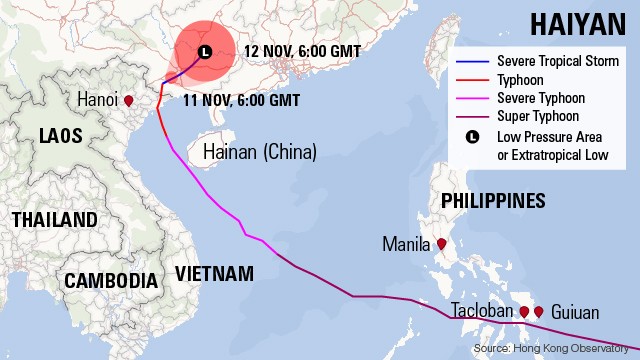
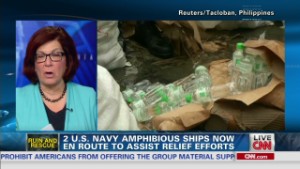
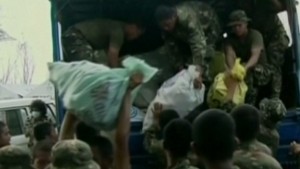
"I don't think that's anyone's fault. I think it's the geography and the devastation," said.
"We need food; we need to eat!" chanted a crowd gathered around supply plane after it landed in Guinan on Tuesday.
The town of 50,000 was wiped off the map by the storm Friday.
Haiyan made its first landfall there. The storm, one of the strongest in recorded history, went on to kill at least 1,833 people and injure 2,623 more.
Glimmer of hope
The first food deliveries in Guinan and in Tacloban, the city hit hardest by the storm, represent a glimmer of hope -- at least to aid workers. It's an initial sign of success after days of frustration.
"I understand that that's not a glimmer of hope for people on the ground, who are still waiting for assistance," De Bono said.
He hopes to see aid delivery leap forward Wednesday. Many air strips have been cleared in devastated areas, and one flight after another lands carrying basic food.
Anticipation and desperation spread across the faces of Guinar's residents, as they watched troops unload bags of rice and boxes of bottled water from the C-130 cargo plane.
Many of them have been drinking filthy water to survive. And that could endanger their health, since the storm has strewn sewage into the water supply.
"The sanitation systems have been destroyed and children are of course the most vulnerable to cholera, which is a common occurrence after these kinds of disasters," De Bono said.
Decomposing bodies
Bodies strewn around by the storm still lie in the debris and on open streets. The government has not been able to count all of them yet, but fears of an exponentially higher death toll have subsided.
Authorities initially feared Haiyan may have killed as many as 10,000 people, but Philippine President Benigno Aquino III told CNN's Christiane Amanpour that the final number would more likely be around 2,000 to 2,500.
Bodies decomposing in the sun commonly raise fears that they could contribute to the spread of disease. But that's usually not the case, said CNN's Dr. Sanjay Gupta.
"From a pure health threat standpoint, there are bigger threats," he said. People need clean food and water.
The slowness of food and basic medical aid delivery is the biggest threat to lives, Gupta said.
"There are people there right now who can be saved. And it could be as simple as antibiotics that cost a penny."
On social media, a government spokeswoman asked for donations of vaccines and antibiotics.
"We have 3k flu vaccines already. Meds needed: tetanus toxoid, doxycycline, cloxacillin," Lucille Sering posted to Twitter.
The World Health Organization agrees with Gupta that illnesses are a secondary concern. "Disease is not a big fear," said spokeswoman Julie Hall. Clean food and water take priority, as well as shelter from the elements.
Homeless, grieving
About half of the displaced have crowded into evacuation centers. There are hundreds of thousands left without homes, and aid organizations are struggling to get roofs over their heads.


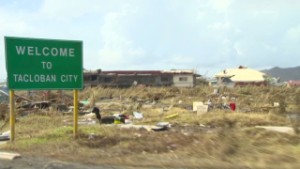
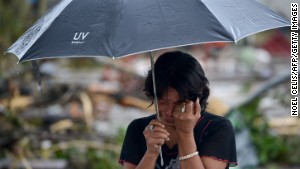
"We're bringing in 20,000 shelter kits, hygiene kits," USAID spokesman Ben Hemingway said. Those shelter kits are sheets of plastic that survivors can hang up over their heads, he explained.
What happens with the bodies of the dead is important to public health, even if the corpses don't significantly spread disease, Hall said. Survivors need to know where they are to be able to grieve and move on and take care of themselves.
In Tacloban, survivor Juan Martinez can't do that yet.
He sits underneath a makeshift shack where his home once stood. Nearby, the bodies of his wife and two children are covered by sacks.
"I really want someone to collect their bodies, so I know where they are taken," he told CNN's Anderson Cooper. "I want to know where they are taken."
Everybody in his town is searching for somebody.
A dog led Yan Chow and a search crew to the body of his daughter buried underneath debris in Tacloban.
Chow had been looking for his two children and his wife since the storm hit. He was texting with his daughter when the messages suddenly stopped, about the time a massive storm surge may have hit the city.
Her body was found not too far from where they found her brother, some distance from their house, Chow said.
He still does not know where his wife is.
U.N.: 25 million
U.S.: 20 million
UK: 16.1 million
UAE: 10 million
Australia: 9.5 million
Canada: 4.8 million
European Union: 4 million
Norway: 3.4 million
Denmark: 3.1 million
New Zealand: 1.75 million
Ireland: 1.4 million
Vatican: 150,000
China: 100,000
Source: U.N. OCHA
There are thousands like him, who have lost part or all of their families, many of them sitting next to their corpses under makeshift shelters.
The lucky ones
In tragedy's midst, there are a few happier stories.
Indiana residents Ron Johnston and his wife, Charity, whose parents live in the devastated town of Baybay, were overjoyed to hear that they survived the storm.
Charity Johnston last spoke to her father on Thursday as Typhoon Haiyan was bearing down on the Philippines, but a cousin found her parents and notified her that they were alive.
But their house is completely gone, along with everything they own. "But they didn't lose the precious thing," Johnston said. "Life."
Hospitals caring for survivors are overfilled, undersupplied and often have no electricity.
But in a hospital in Tacloban this week, a baby was born. Neighbors brought the mother in, after she went into labor in wreckage of the storm.
No complications, no bleeding. A perfect delivery.
The hospital went up in applause.
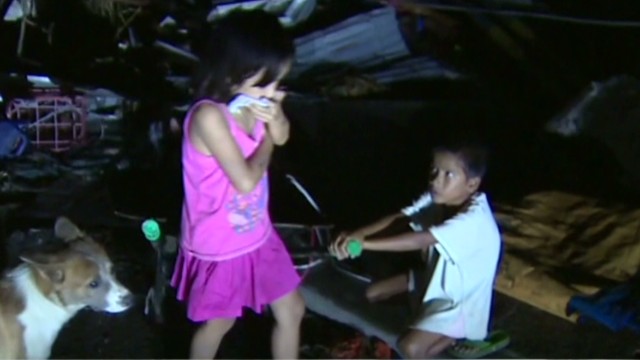
No comments:
Post a Comment